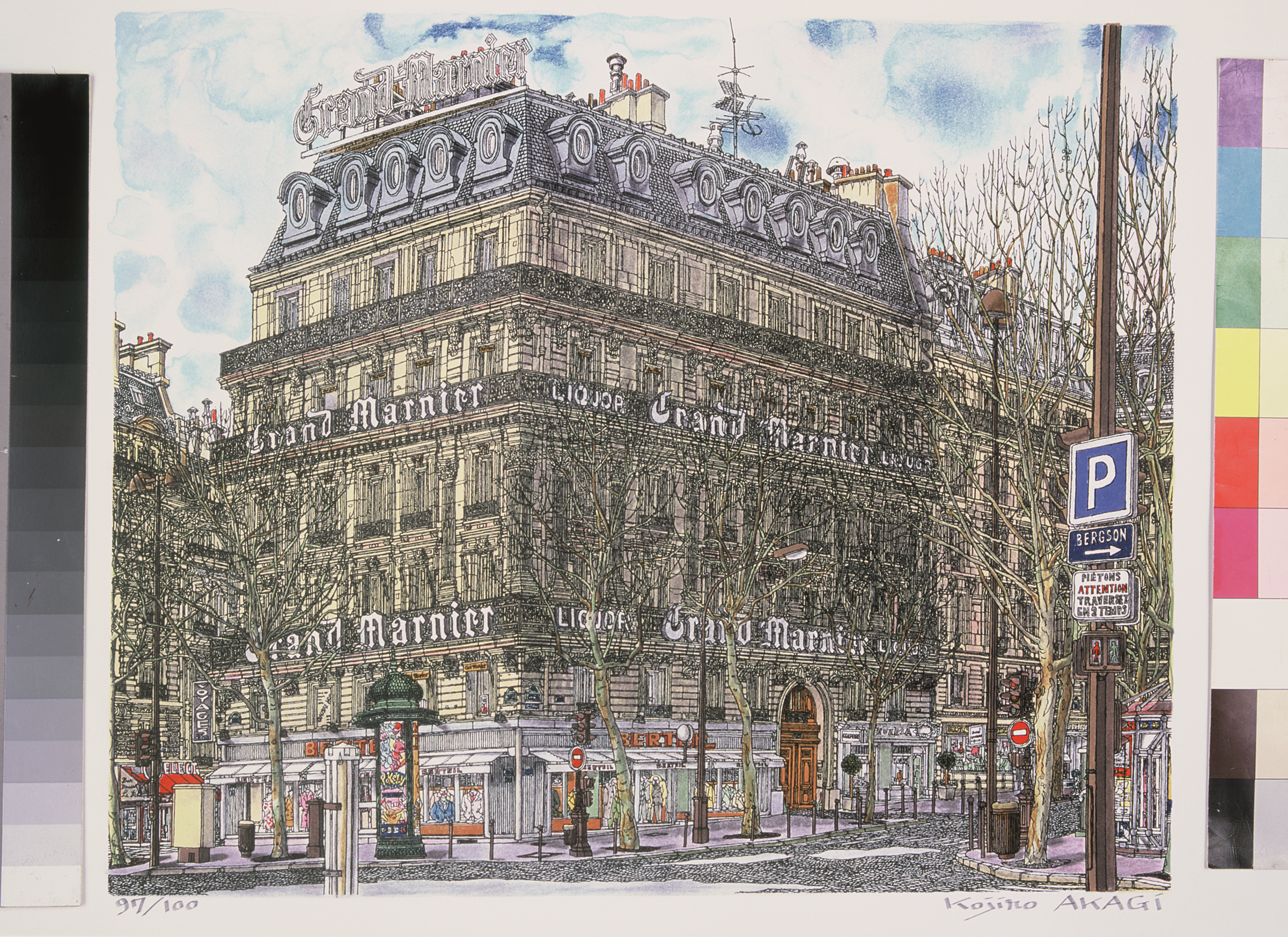La Maison Grand Marnier / Headquarters of Grand Marnier / グラン・マルニエー
Dublin Core
タイトル (Title)
La Maison Grand Marnier / Headquarters of Grand Marnier / グラン・マルニエー
テーマ (Subject)
Maison, Lithographie
詳細 (Description)
Au milieu du 19e siècle, Napoléon III et son préfet de l’époque, Haussmann, transforment la ville de Paris. Ils démolissent notamment de nombreux bâtiments des quartiers situés à l’intérieur de l’enceinte qui entourait la capitale depuis le Moyen-âge. D’immenses boulevards sont tracés pour former de grands axes de circulation. Comme c’est le cas à toutes les époques, beaucoup s’opposent fermement à ces restructurations. De nombreux documents de l’époque témoignent des critiques négatives à l’encontre de ces projets. C’est pourtant le visage du Paris d’aujourd’hui que l’on connaît sous le nom de «style haussmannien», avec ses grands boulevards et ses immeubles caractéristiques de cette période. Le style haussmannien symbolise le Paris du 19e siècle, époque où la capitale prospère grâce aux fortunes issues des colonies françaises. Ce style perdure jusqu’au 20e siècle, moment où l’art nouveau prend la relève. La sérigraphie ci-contre représente le bâtiment hébergeant la maison mère de Grand Marnier, connue pour sa liqueur. C’est une vue classique de Paris, mais elle représente,
Napoleon III realized a great renovation in city planning for Paris with Haussmann, Prefect of the Seine at that time in the middle of the 19th century. They knocked down old castle walls which had surrounded the city of Paris since Medieval Times to make main streets vertically, horizontally, and diagonally. As is often the case even today, a lot of people vehemently opposed the measures. However, the face of Paris which is familiar to us today was born at that time. The buildings on the main streets were built so that they would be integrated into almost the same style to maintain the image of a city in harmony, which is called the Ottoman style. The splendour of prosperous, decadent, metropolitan Paris had been generated by the influx of wealth from the colonies until the new style, art nouveau, was born in the beginning of the 20th century. This building has the headquarters of Grand Marnier, a famous company producing orange liqueur, which I think looks like any other street corner in Paris.
十九世紀半ばにナポレオン三世が、当時の県知事オスマンと組んで、パリの都市計画大改造を実現する。古い中世からの城壁に囲まれた都市パリを、どんどん取り壊して、大通りを、縦横斜めに通したのだ。何時の時代にも同じだが、もちろん猛反対する人も多かった。悪口だらけで記録も残っているが、しかし現在お馴染みのパリの顔は、この時に誕生したものだった。大通りに面した建物を大体同じ様式に統一して、建てさせたのだから、揃った都市のイメージが誕生したので、今ではオスマン様式と呼ばれている。二〇世紀の始めになって新スタイルと呼ばれる、アール・ヌーボー様式の誕生するまで、植民地からどんどん富の入ってくる、繁栄する大都会、世紀末のパリは、このオスマンスタイルの豪華さで生れている。グラン・マルニエーという有名なオレンジリキュール酒の、本社が入っている建物だけれど、一番馴染みの、どこにでもあるパリ街角の原風景に思える。
制作者 (Creator)
Kojiro Akagi (1934-2021)
日付 (Date)
2000 / 2000
権利 (Rights)
Fonds de dotation Kojiro AKAGI
フォーマット (Format)
Lithographie, Possolitho, IDL Graphiques, 100 tirages + 20 Royce’s romain + 22 E.A. romain, sur papier BFK Rives 48,0 x 58,0 cm.
タイプ (Type)
Lithographie
タグ
引用
Kojiro Akagi (1934-2021), “La Maison Grand Marnier / Headquarters of Grand Marnier / グラン・マルニエー,” Kojiro Akagi - Fonds de dotation Kojiro AKAGI , accessed 2025年12月7日, https://kojiroakagi.com/gallery/items/show/35.

